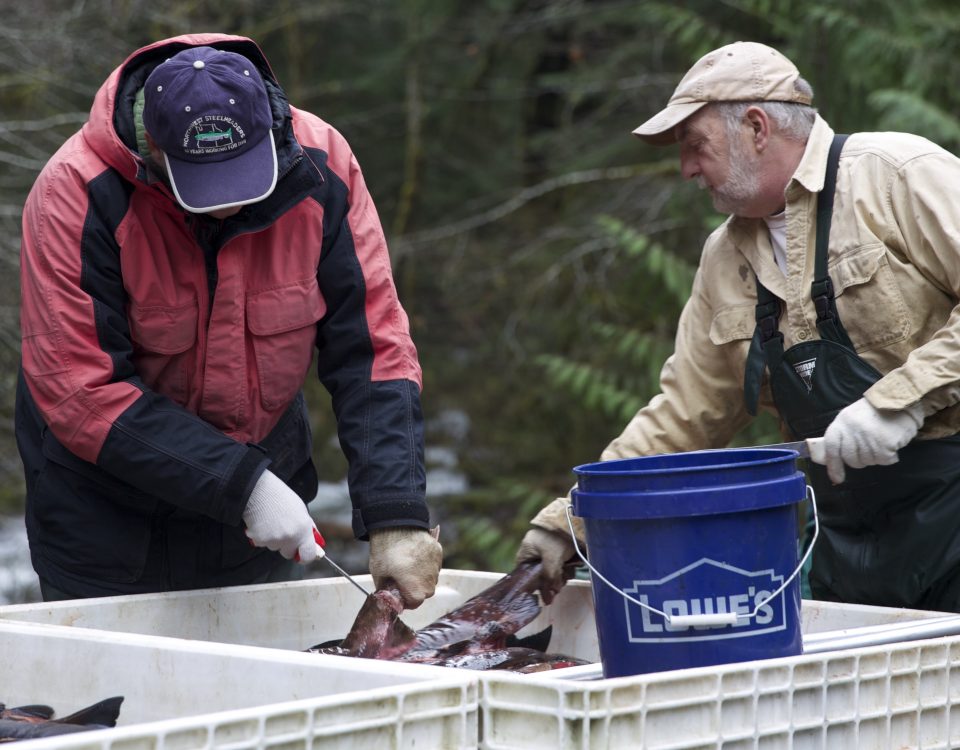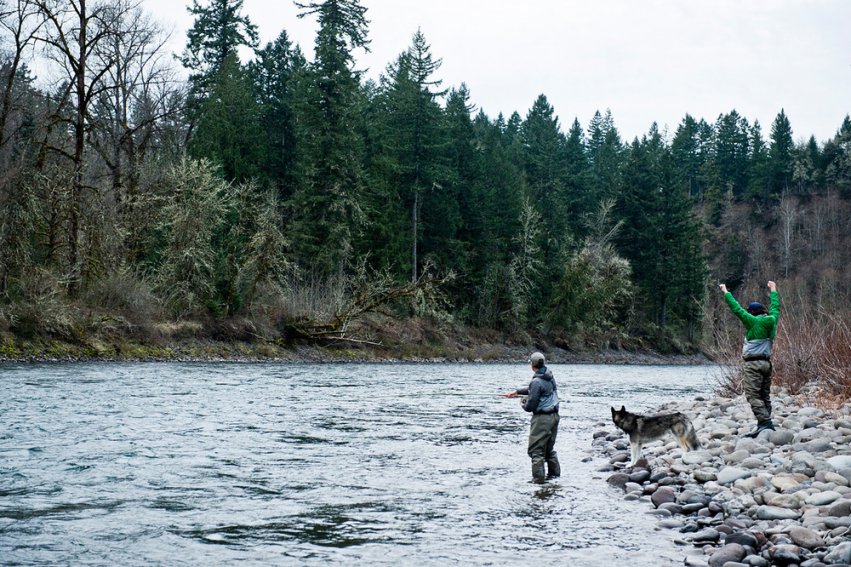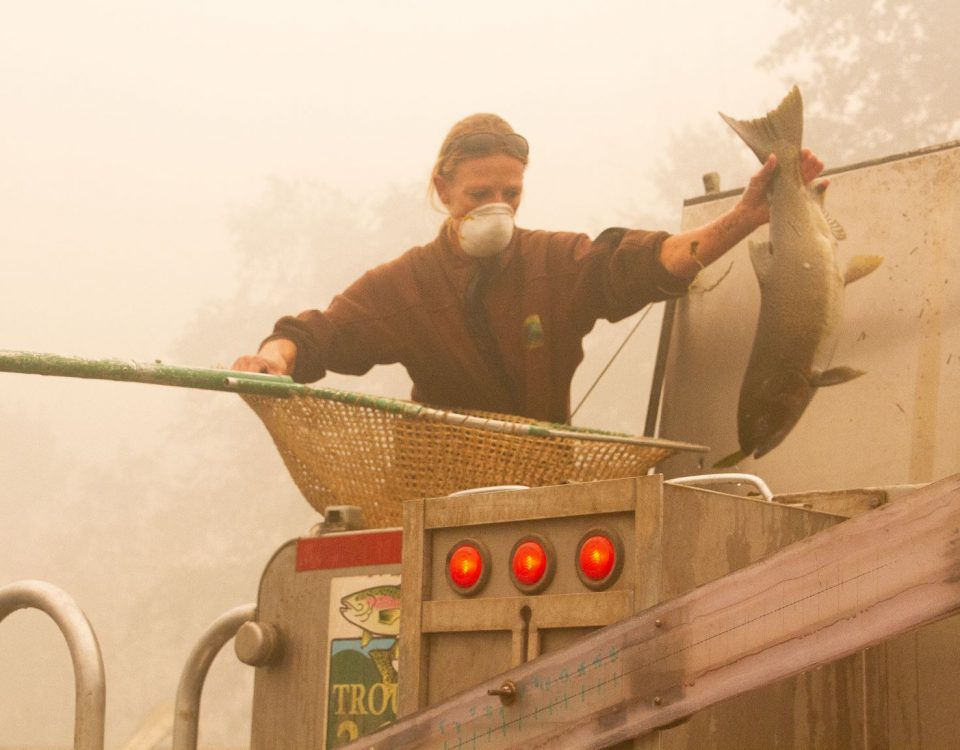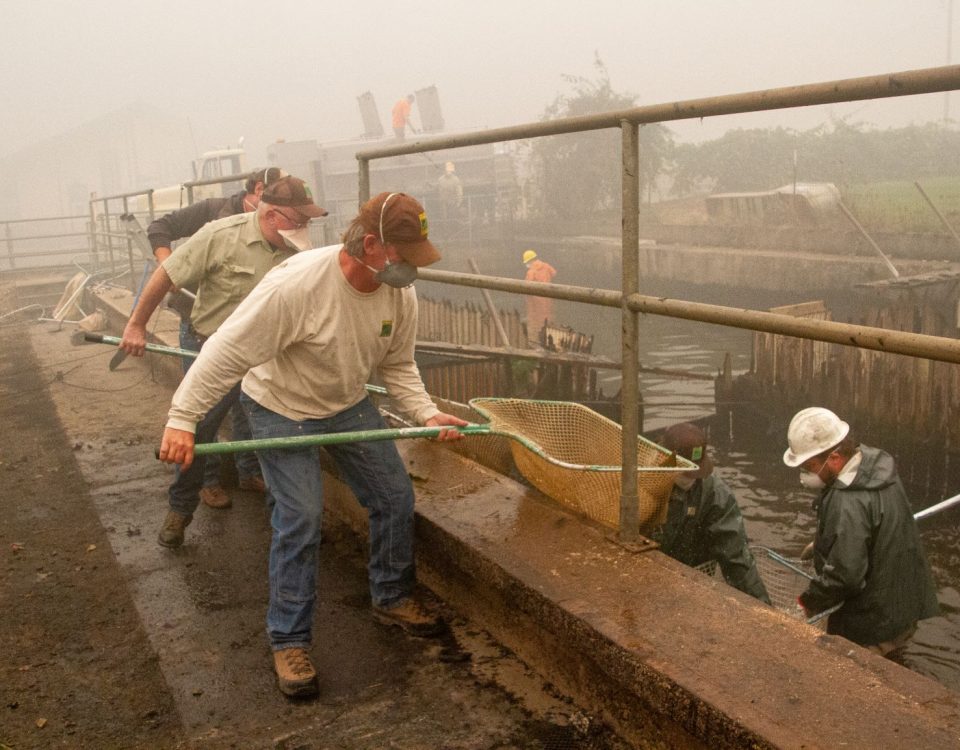
Hatcheries
Ensuring Hatcheries Continue to Sustain Northwest Fisheries
Due to extensive habitat degradation and hydropower development, wild salmon and steelhead abundance and productivity remain greatly diminished. Hatcheries are essential for mitigating the impacts of development on our salmon populations to ensure that recreational, commercial, and tribal fisheries are capable of providing economic, quality-of-life, and cultural benefits.
Hatcheries can be managed to minimize risk to wild fish populations, support conservation and recovery objectives, and sustain robust harvest fisheries by using practices informed by the best available science. Though Northwest fisheries stakeholders differ in their preference for hatcheries, all seek healthy, abundant, and dependable wild fish runs. Northwest Steelheaders is committed to ensuring that our hatcheries are managed efficiently to produce enough fish to support meaningful recreational angling opportunities. We believe hatcheries are a necessary tool to sustain fishing until we are able to recover wild runs.
Our Hatchery Work
The health and abundance of wild and hatchery fish – and the habitats upon which they depend – are inextricably intertwined. The more wild fish that return to our watersheds, the more flexibility we have to increase hatchery production and collect additional wild broodstock. Since 1992, volunteers from the Emerald Empire Chapter have been instrumental in operating the Letz Creek STEP Hatchery, collecting adults, incubating eggs, and rearing 15,000 winter steelhead smolts to release into the Siuslaw River system each year. To get involved in this program, contact us at office@anws.org.
In 2020, we were the driving force behind ODFW’s application to revitalize broodstock at the Clackamas Hatchery with new wild spring Chinook. We also launched the Oregon Hatchery Recovery Fund to support ODFW’s effort to replace and rebuild critical infrastructure lost in the 2020 Labor Day wildfires that impacted Rock Creek, Leaburg, and Klamath hatcheries.
In the past, we have advocated for continued funding of the North Santiam summer steelhead program and the Leaburg Hatchery, and now funding is ever more important to secure in the wake of the fires.
Management Reform
The first hatchery in the Northwest was built in 1877 on the Clackamas River south of Portland, Oregon, and by the 1940s, it was clear that fish hatchery programs needed a better grounding in fish science. It wasn’t until the 1980s and 90s that a crucial paradigm shift occurred. Fisheries management underwent a “transition from a fish-production focus to an ecosystem-management focus, in which fish and wildlife are managed as part of the environment that supports them.”
The Hatchery Scientific Review Group issued a 2014 report “On the Science of Hatcheries,” which contains recommendations that merge conservation goals for naturally spawning populations while maximizing salmon harvest based on three principles:
Principle 1: Develop clear, specific, quantifiable harvest and conservation goals for natural and hatchery populations within an “all H” (hydropower, hatcheries, harvest, habitat) context
Principle 2: Design and operate hatchery programs in a scientifically defensible manner
Principle 3: Monitor, evaluate and adaptively manage hatchery programs
By implementing the best available science and committing to an ecosystem approach, many hatcheries in the Pacific Northwest have become useful and pragmatic tools for salmon and steelhead recovery. In order for hatcheries to operate with optimal results, they must abide by these four rules of thumb:
1. Don’t transfer stock between river basins
2. Use local wild fish as brood stock rather than returning hatchery fish
3. Control the number of hatchery fish on wild spawning grounds (ideally there are none)
4. mimic natural rearing conditions and lifecycle timelines in the hatchery as closely as possible
Wildfires raging through Oregon leveled Rock Creek hatchery and severely damaged Klamath and Leaburg hatcheries. While ODFW staff were able to release or transfer millions of fish, hundreds of thousands perished. To minimize the impact of hatchery damage on our fishing seasons, Northwest Steelheaders is raising money for ODFW hatchery recovery projects.
When you contribute to our Oregon Hatchery Recovery Fund, you’re taking a direct and meaningful action to preserve recreational angling opportunity. Proceeds will support the recovery of Rock Creek, Klamath, and Leaburg hatcheries.
Hatcheries were already losing funding. Now, we have an opportunity to build resilient infrastructure to not only replace, but improve what we’ve lost. As so many projects in our community need funding right now in the wake of the wildfires and COVID-19, we hope that you will consider giving whatever you can to help us rebuild the facilities that support salmon and steelhead angling. Every penny helps!




